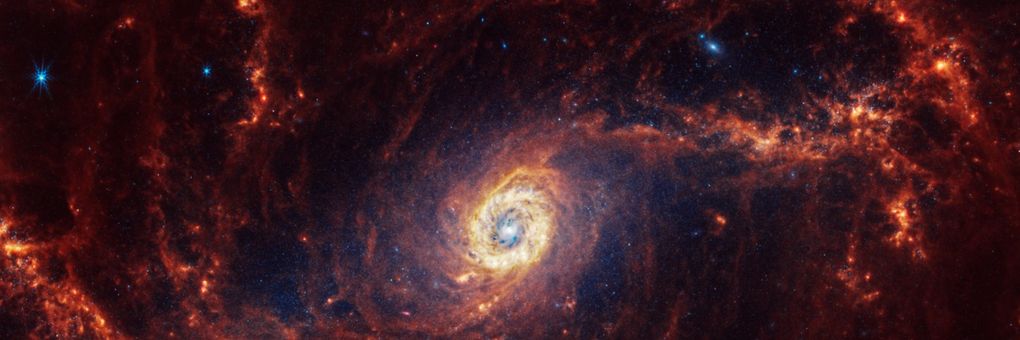Since 2022, when we first saw a visualization of black holes, we’ve learned key theories about their genesis and properties.
◊
All hail the James Webb Space Telescope (JWST)! Since it started sending images of deep space to enthusiastic astronomers and the public in July 2022, its many discoveries have electrified the scientific community. Some of its most intriguing observations have illuminated our knowledge about black holes: their origins and surprising properties. Here are three key recent discoveries that have added to our understanding.
What can supermassive black holes tell us about the extremes of time and space? To discover more, view The Most Powerful Black Holes in the Universe.
1 – The Youngest, Most Distant Black Holes Yet Known
In January 2024, astrophysicists studying JWST findings announced the discovery of a black hole 13 billion light-years away in the center of galaxy GN-z11. This black hole is supermassive and is dated to only 400 million years after the Big Bang. These two facts together are a conundrum, as young galaxies have until recently not been perceived as homes to black holes of that magnitude and brightness.
This discovery is just the latest in a string of enormous, young black holes breaking records. Only one year prior, the JWST identified another distant, active supermassive black hole in the galaxy CEERS 1019. This one came into existence just over 570 million years after the Big Bang.
Realistically, these are likely not the most distant black holes left to be discovered. What’s intriguing about these discoveries is that they defy what was accepted as common understanding that the black holes of young galaxies would be relatively small and dim. It remains to be seen how these seeming anomalies will fit into our understanding of the young universe.
2 – How Are Quasars Related to Black Holes?
Observations made by the JWST led to the 2023 detection of host galaxies of two quasars, HSC J2236+0032 and HSC J2255+0251, dating back to when the universe was about 860 million years old. This was the earliest detection of starlight within such galaxies, aiding our understanding of the relationship between black holes and their host galaxies in the early universe. Quasars, as these observations show, result from intense radiation powered by supermassive black holes in the center of their galaxies.

Quasars are among the brightest phenomena in the universe. This artist’s conception shows radiation streaming from the center of a galaxy. (Source: NASA, ESA and J. Olmsted [STScI])
3 – What Can Black Holes Tell Us About Galaxy Evolution?
In July 2022, the JWST provided detailed images of Stephan’s Quintet, a group of five galaxies. This observation was quickly followed by insights into how galactic interactions can trigger star formation and also how gas dynamics in galaxies are influenced by these interactions. Notably, the telescope captured detailed images of outflows driven by black holes within the galaxies, highlighting the dynamic processes powered by black holes at unprecedented scales.
This is an exciting time for astrophysics powered by observations and analysis of images supplied by the James Webb Space Telescope. It’s really just a matter of time before more paradigm-shattering discoveries come to light.
Ω
Title Image: Spiral galaxy NGC 1672 is 60 million light-years away in the constellation Dorado. Photo by James Webb Space Telescope, 2024 (Credit: NASA, ESA, CSA, STScI, Janice Lee [STScI], Thomas Williams [Oxford], and the PHANGS team)


